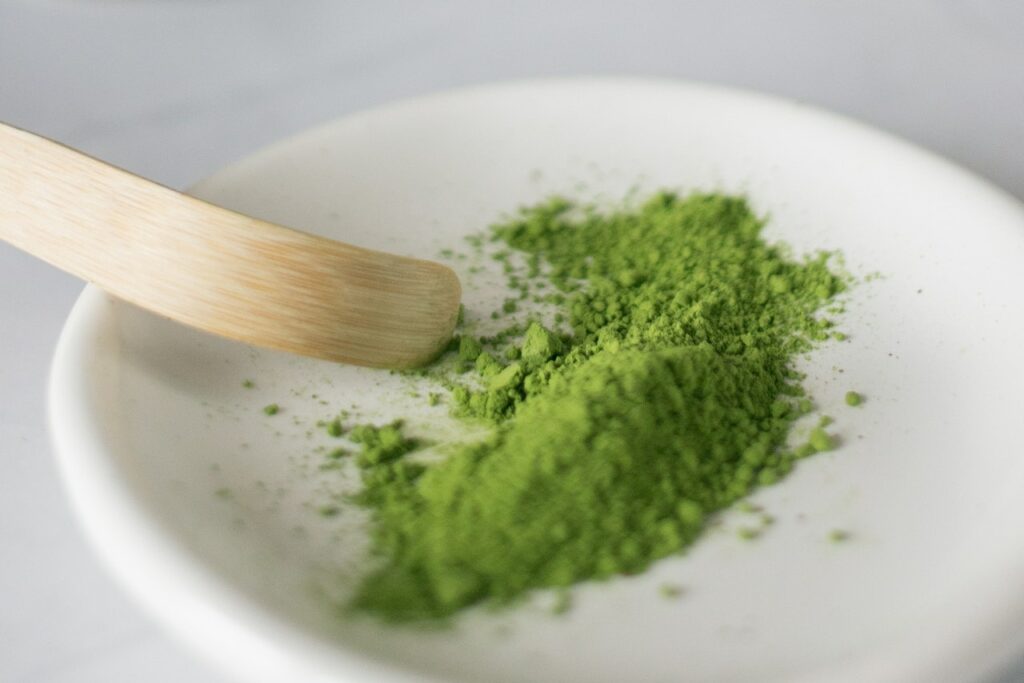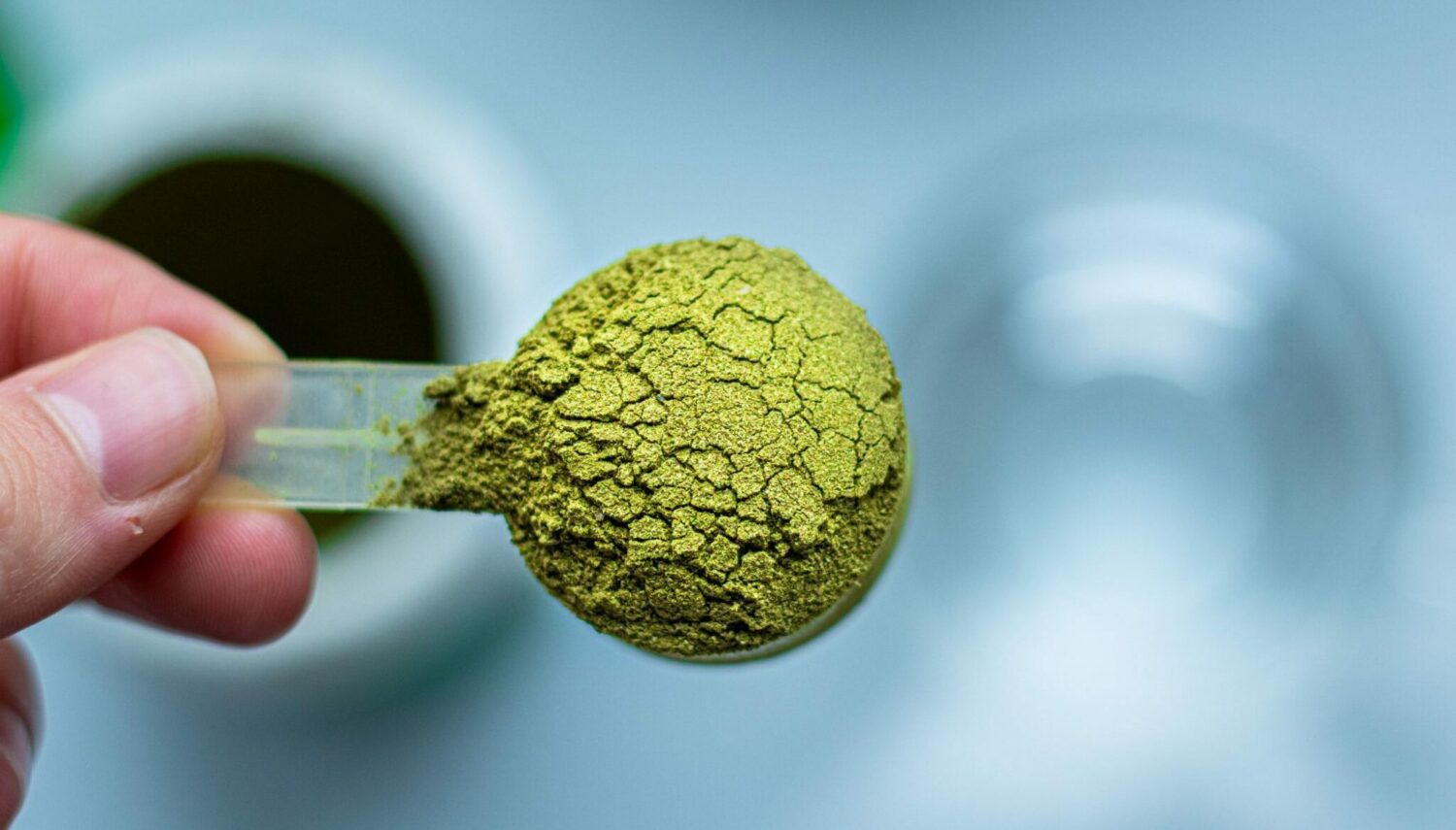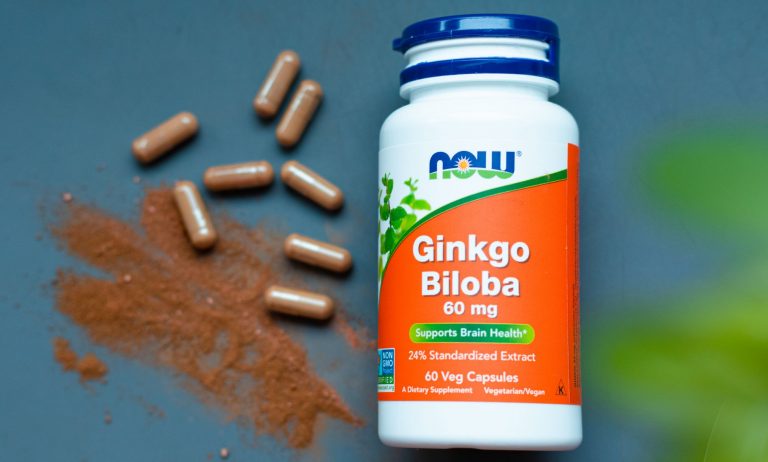The Power of Chlorella: 7 Health Benefits and Nutrition
Chlorella is a single-celled green alga known for its detoxing superpowers. A rich nutritional profile, full of vitamins, minerals, and omega 3’s can have multiple health benefits in humans. The superpowers of this algae lie in its bioactive phenolic compounds which have been shown to improve one’s energy levels, bind to toxins and heavy metals, and protect the liver and body’s natural immune function.
Chlorella
Chlorella Origins
Native to Taiwan and Japan, the algae belong to the division Chlorophyta, measuring 2-10 micrometers in diameter. Contains chlorophyll-a and chlorophyll-b pigments. The name chlorella has Greek origins, chloros – green, and the Latin suffix ella, which means small.
Chlorella Structure
This green alga has a tough cell wall and in order for us humans to experience its benefits, it is best to use a supplement with the cracked wall. It comes in the form of tablets, powders, and capsules. The most used form in alternative medicine is Chlorella Vulgaris, this algae grows very rapidly, and requires carbon dioxide, water, sunlight, and minerals to reproduce. (1)
Is chlorella a good detox supplement?
From a detoxication perspective, chlorella, as many supplemental algae seems to be quite efficient in this regard. It has a potent antioxidant activity which may reduce inflammation and free radicals. In terms of liver detox and protection, it was shown to reduce AST and ALT enzymes.
Are chlorophyll and chlorella the same?
No, they’re not. Chlorella is a single-celled green alga which contains chlorophyl. Chlorophyl on the other hand, is a compound contained in chlorella. Chlorella contains two types of chlorophyll, A and B, both natural and fat-soluble. This is the pigment that gives leaves and green plants their vibrant green color. Plants use chlorophyll for a process known as photosynthesis.
Which one is better, spirulina or chlorella?
When it comes to these two algae, both of them are actually pretty similar. They are considered superfoods, due to their nutrient rich profile. They both contain chlorophyl, vitamins, minerals and antioxidants. They’re both anti-inflammatory and have potent antioxidant properties.
Nutritional profile
Chlorella is a great vegan option since it is full of protein (almost 60%) and it contains all 9 essential amino-acid. Being a great source of B12 adds to the fact it is great for vegans too. Also rich in iron, vitamin C, chlorophyll, beta-carotene, and pigments that have great therapeutic properties.
Chlorella’s micronutrient profile per 100 grams:
| Vitamins | Quantity | Minerals | Quantity |
| Vitamin A | 51300 IU (1026% DV) | Calcium | 221 mg (22% DV) |
| Vitamin A | 10.4 mg (17% DV) | Iron | 130 mg (722%) |
| Thiamin | 1.7 mg (113% DV) | Zinc | 71.0 mg (473% DV) |
| Riboflavin | 4.3 mg (253% DV) | Magnesium | 315 mg (79% DV) |
| Niacin | 23.8 mg (119% DV) | Phosphorus | 895 mg (90% DV) |
| Vitamin B6 | 1.4 mg (70% DV) |
Also, chlorella is rich in omega 3’s, like most algae. This is why fish are rich in omega 3’s because they eat algae. Getting omega 3 straight and fresh from the source is best. Just 3 grams of chlorella can give you 100 mg of omega 3’s.
This single-celled green alga can also be beneficial for eye health, due to its content of lutein and zeaxanthin, two carotenoids that protect the eye and may lower the risk of macular degeneration. Chlorella is also rich in xanthine, gamma-carotene, and lycopene, compounds that can support eye health and improve vision. (2)
Fun Fact
There was a plan to make this the “travel to mars food” just like spirulina. Algaes are amongst the richest, nutrient-dense foods on the planet. Chlorella may be beneficial for blocking radiation too. A possible biofuel, and biofertilizer, is a substance that contains microorganisms that can promote plant growth by increasing the supply or availability of primary nutrients when applied to seeds, and plant surfaces of soil.
This alga might help in the prevention of dementia and cardiovascular diseases which originate from oxidative stress and inflammation, due to its potent antioxidant properties. It can also be used as a longevity tonic since it fights inflammation and decreases oxidative stress, reducing its detrimental effects on the DNA.
- If you’re into green algae, check Spirulina Benefits
- If you’re into Green superfoods, check Matcha Green Tea Benefits
Caution: Chlorella is likely safe for humans, and used in regular dosages. Make sure you find a good source of chlorella because not all sources can be safe and it might be contaminated. In some individuals, light side effects like nausea and bloating have appeared.
Chlorella | Potential Benefits
1. Potential Heavy Metal & Toxins Protection
Chlorella has thousands of benefits because of its rich nutritional profile, but one of the most notable superpowers of this algae is its ability to bind to heavy metals and toxins. It was shown to help the body’s elimination process of heavy metals, dioxin, and radioactive components.
Cardiovascular diseases are linked to heavy metal exposure and impaired antioxidant metabolism where oxidative stress may play a role. Heavy metals like cadmium, mercury, arsenic, and lead might be some of the causes of CVD. (3)
- In 10 weeks old mice, the exertion of Methylmercury (MeHg) was drastically increased in chlorella groups. (4)
- Chlorella may help our bodies to eliminate heavy metals. Dietary strategies might help eliminate toxicity with cadmium since there are several protective benefits from ingesting vitamins, edible plants, phytochemicals, and probiotics. (5)
- Lead-exposed mice had a significant reduction in blood lead levels, due to the chelating effects of chlorella. (6)
In fact, it was shown that eating foods rich in iron, calcium, selenium, zinc, and vitamin B can have positive effects and chlorella has all of these elements.
Chlorella was shown to inhibit the absorption of 90Sr (radionuclides that are harmful in humans, present in the atmosphere and ocean) and speed up its elimination. Further studies are required to see the full benefits of chlorella on the elimination of radioactive strontium. (10)
Extra Research: Chlorella’s Metal Chelating Effect
- Chlorella supplementation may decrease dioxin and increase immunoglobulin concentrations in breast milk. During pregnancy, 18 of 35 women took chlorella tablets and they had a significant reduction in toxic equivalents. (7) Chlorella increased the exertion of H6CDD in mice, which may be useful for inhibiting dioxins absorption and preventing its accumulation. (8)
- Chlorophyll, which is present in chlorella was shown to reduce dioxin absorption from the gastrointestinal tract and accelerate dioxin exertion, using 4g of chlorophyll in the diet (0.01-0.05%) of rats. (9)
- Chlorella Vulgaris has been shown to restore cytokine production in mice, who are exposed to heavy metal lead. Lead can impair the production of IFN-y, IL-1a, and TNF-a and increase IL-10 and IL-6, these effects have been successfully modulated by CV. (11)
2. May Boost The Immune System
Chlorella has also immuno-modulatory effects and may increase antibody production in humans. It can also increase natural killer cells and improve immune function.
- Chlorella may have an immuno-enhancing effect. In people aged 50-55 years who received the influenza vaccine, there was a significant improvement in antibodies. (12)
- Chlorella has been shown effective in increasing natural killer cells. This study showed that chlorella can have beneficial immuno-stimulatory effects, enhancing the production of interferon-y and interleukin-12 in healthy people. (13)
This green alga has been shown to have immune function-related effects. In this study, 30 men took a placebo and 30 took chlorella tablets for 4 weeks separated by a 12-week washout period. In the end, it was concluded that chlorella might increase salivary secretory immunoglobulin A and improve mucosal function in humans. (14)

3. Could Enhance Aerobic Endurance
Fatigue fighting is one of chlorella’s main benefits due to its BCAA content, which are amino acids that can help with perceived exhaustion and improve physical, especially aerobic performance.
When the athlete is exhausted, levels of serotonin are raised, giving the sense of a runners high, but also tiredness. BCAA’s, because of their similar form can bind to the same receptor and interrupt this pathway while enabling the body to fight fatigue.
- Chlorella is rich in BCAA’s which can act on lipid metabolism and improve fatigue resistance and aerobic capacity in glycogen-depleted athletes after training. (15)
Adding BCAA’s to aerobic workouts in athletes, running at 70% VO2max pace till exhaustion, has shown to be beneficial and improve aerobic capacity. Observed BCAA’s effect on levels of fatigue substances like LDH and CK, muscle damage substances, and energy metabolism substances – it was concluded that BCAA has positive effect. It lowered serotonin (central fatigue) and improved aerobic performance while reducing CK and LDH.(16)
- This green alga was shown to improve aerobic performance through a significant increase in peak oxygen uptake in seven men and three women during incremental maximal cycling. (17)
4. May Improve Cholesterol Profile
Some of the chlorella’s physiological effects have been beneficial in treating high-risk lifestyle-related diseases, associated with high cholesterol.
Chlorella reduced levels of fasting blood glucose, body fat percentage, and serum total cholesterol. (18) In gene analysis it was found that chlorella acted upon a gene expression mechanism related to glucose uptake, which indicates that activation of insulin signaling pathways could be a reason for its hypoglycemic effects.
- The group taking Chlorella had a significant reduction of LDL cholesterol and triglycerides. The mechanism behind this is the enhancement of total serum carotenoid concentration, tested in mildly hypercholesterolemic subjects. (19)
- Aside from these studies, chlorella contains high amounts of carotenoids, fiber, and niacin, all of which have been shown to improve cholesterol profile. (21)
Extra Research: Chlorella on Cholesterol and Immunity
- In the Medical College of Virginia, there is a review of clinical trials that suggests that 10g pure chlorella, and 100 ml liquid containing chlorella extract for 2-3 months, may relieve symptoms in people with fibromyalgia and hypertension. Mechanisms behind this are enhanced immune function, wound healing, lower serum cholesterol, and reduction in high blood pressure. (20)
- Niacin has been shown to work for high cholesterol levels, reducing LDL and triglycerides if used in higher dosages (500mg), but it was inefficient for treating cardiovascular diseases or events such as heart attack or stroke. (22)

5. Has Potent Antioxidant Properties
Modulation of antioxidant enzymes and antioxidant gene expression is one of chlorella’s main antioxidant mechanisms. These effects come with its bioactive phenolic compounds which can help the body fight oxidative stress and decrease DNA damage, especially important and beneficial in heavy smokers and humans with chronic inflammatory diseases.
Chlorella Vulgaris was shown to modulate the antioxidant enzyme activity of enzymes like SOD< GPx and CAT. Chlorella was beneficial for reducing lipid peroxidation during aging too. (23)
Since this alga is rich in bioactive phenolic compounds, it possesses strong antioxidant activity. (24)
- The rich nutritional profile of chlorella made up of proteins, omega 3’s, polysaccharides, vitamins, and minerals may protect against oxidative stress, cancer, and chronic obstructive pulmonary diseases. (25)
- It was shown to improve antioxidant status and attenuate lipid peroxidation in chronic cigarette smokers. (26)
- It can modulate DNA damage induced by hydrogen peroxide. It exhibited bioprotective effects against free radical attack, which may prevent telomere shortening in these cells. (27)
- It may inhibit the formation of AGE’s – advanced glycation end products linked to aging, atherosclerosis, and diabetes (28)
6. Aids In Liver Protection & Detox
After some liver-protective effects investigation, it was concluded that chlorella supplementation may reduce serum levels of AST and ALT liver enzymes, improve energy in hepatitis virus patients, and induce hepatoprotective effects in NAFLD patients.
- Chlorella Vulgaris supplementation in rabbits improved performance through oxidative stress attenuation and enhancement of antioxidant enzyme activities. (29)
- Oral supplementation of chlorella daily for 12 weeks in 18 adults with chronic infection of the Hepatitis C virus was effective in reducing ALT liver enzyme levels by 84.61% Patients also reported improvements in energy levels and general health. (30)
- Chlorophyll and chlorophyllin have different therapeutic properties. These may include faster-wound healing, reducing risk for liver cancer, internal deodorant or preventing fecal odors, aid in chronic constipation, and acne treatment and it has antibacterial properties (31) (32) (33)
Fun Fact
Chlorella contains two types of chlorophyll, A and B, both natural and fat-soluble. This is the pigment that gives leaves and green plants their vibrant green color. Plants use chlorophyll for a process known as photosynthesis.
7. Supports Eye Health
This single-celled green alga can also be beneficial for eye health, due to its content of lutein and zeaxanthin, two carotenoids that protect the eye and may lower the risk of macular degeneration. Chlorella is also rich in xanthine, gamma-carotene, and lycopene, compounds that can support eye health and improve vision. (34)
- Lutein, as a carotenoid has anti-inflammatory effects. It was shown to be beneficial for treating age-related macular disease, which can lead to vision impairment. Lutein can also aid in cognitive performance, especially in age-related decreases. (35) Research data with longer durations are needed to conclude these effects.
- Zeaxanthin may exert antioxidant effects and decrease inflammation. Possible effects of this carotenoid are eye, heart, liver, and skin protection. (36)
A combination of Zeaxanthin, Lutein with vitamin C, and omega 3’s (DHA and EPA) might reduce the risk of age-related eye disease. In this study, this combination did not further reduce the risk of this disease progression to advanced (AMD), but it may be beneficial in smokers. (37)
Research Limitation
*Studies have some limitations, important to evaluate the validity of their results. Here’s a highlight of some and NOT ALL studies (and limitation), shown in this article, for context.
- Research done in animal models, can’t be completely replicated in humans *female rabbits, female mice, inbred mice.
- Aged data or data older than 10 years * 2012, 2011, 2008, 2007, 2003 etc.
- Further research needed to asses effects of immune modulation and transcripts expression in rabbits.
- Shorter duration of trials * 2-weels lead-in, 4-weeks intervention period
- Further research with longer duration, randomized control trials and large cohorts are needed for stronger evidence.
- Large-scale prospective studies of longer follow-up are needed to clarify heavy metals toxicity, with prior identification of appropriate biomarkers.
- Theory-based approach for specific studies * BCAA intake effectiveness in enhancing exercise performance.
Disclaimer: The content on this Site is for informational purposes only, and it is NOT intended to give or replace medical advice. Make sure you consult your physician, doctor or health professional before using any supplement, for its dosage, uses, precautions, and interactions.
Usage, Safety, and Drug Interactions
Uses
Safety & Side effects
Drug Interactions
- Chlorella has been used as a herb in alternative medicine. Mostly used to prevent low levels of iron in pregnant women, has been also used for depression, menstrual cramps, fibromyalgia, and high cholesterol. (38)
- There is insufficient evidence for the usage of chlorella in treating or preventing brain tumors, depression, menstrual cramps, fatigue, fibromyalgia, swelling by hepatitis C virus, high blood pressure or cholesterol levels, Crohn’s disease, or STDs.
- Up to 29 weeks, it is likely safe, taken by mouth. Might include light side effects like diarrhea, nausea, gas, or stomach cramps.
- People who are allergic to molds or sensitive to iodine should consider speaking with their doctor first. Immunodeficiency diseases might face problems with chlorella since its bad bacteria might take over the intestines in people with weak immunity, especially in the first 2 weeks.
- Chlorella might interact with medications like Warfarin, because of its large dosage in vitamin K, so it may decrease warfarin effectiveness. Also, it may interact with Immuno-suppressants and decrease their effectiveness.
conclusion
Chlorella is a powerful single-celled green alga full of chlorophyll (A and B type), vitamins, and minerals. It comes with potent detoxifying properties and may help improve cholesterol profile, aerobic endurance, boost the immune system, and support eye health.
Frequently Asked Questions
Does chlorella help eliminate heavy metals and toxins?
Chlorella has the potential of toxin and heavy metal protection. It has the ability to bind to some metals and toxins and assist the body’s elimination process of heavy metals, dioxin or radioactive components.
What does chlorella do for your body?
Chlorella provides a ton of nutrients per small volume, as most green algae considered a superfood do. It is similar to spirulina, packing a bunch of vitamins, minerals and antioxidants. Aside from providing nutrition, it’s main power is aiding in detox. Chlorella has a potent antioxidant activity, helpful for reducing inflammation and fighting free radicals, toxins and heavy metals.
What are the benefits of chlorella?
Chlorella has myriad of potential benefits which include:
-Aid in detox, toxins and heavy metal protection
-Potentially boost the immune system
-Increase aerobic endurance (performance)
-Improve cholesterol profile (increase HDL, lower LDL)
-Potent antioxidant properties (anti-inflammatory)
-Aids in liver detox/protection, may reduce AST, ALT enzymes
-May support eye health
What are the side effects of taking chlorella?
Chlorella, as many other supplements comes with the possibility of diarrhea, nausea, stomach cramps and gas.








